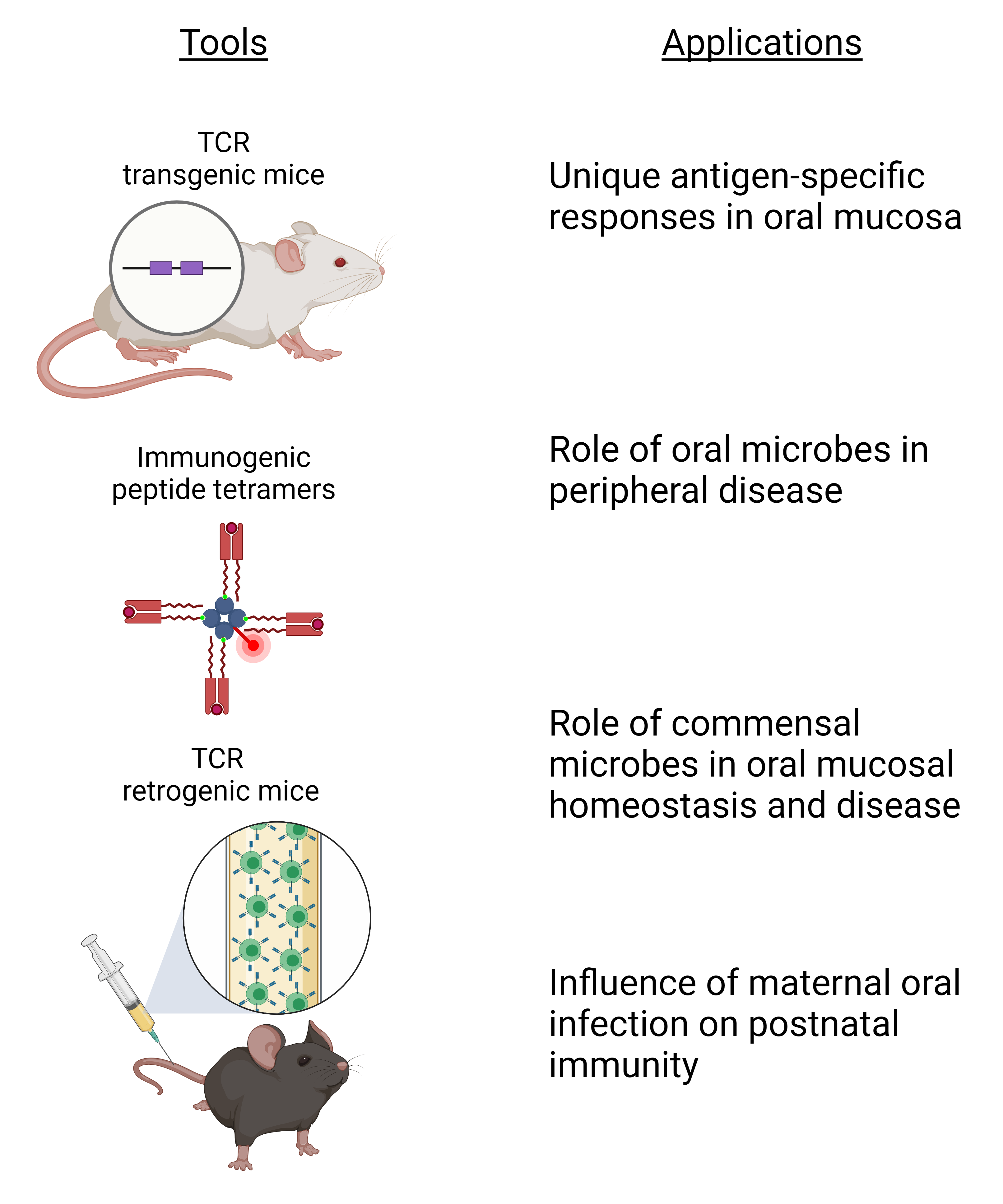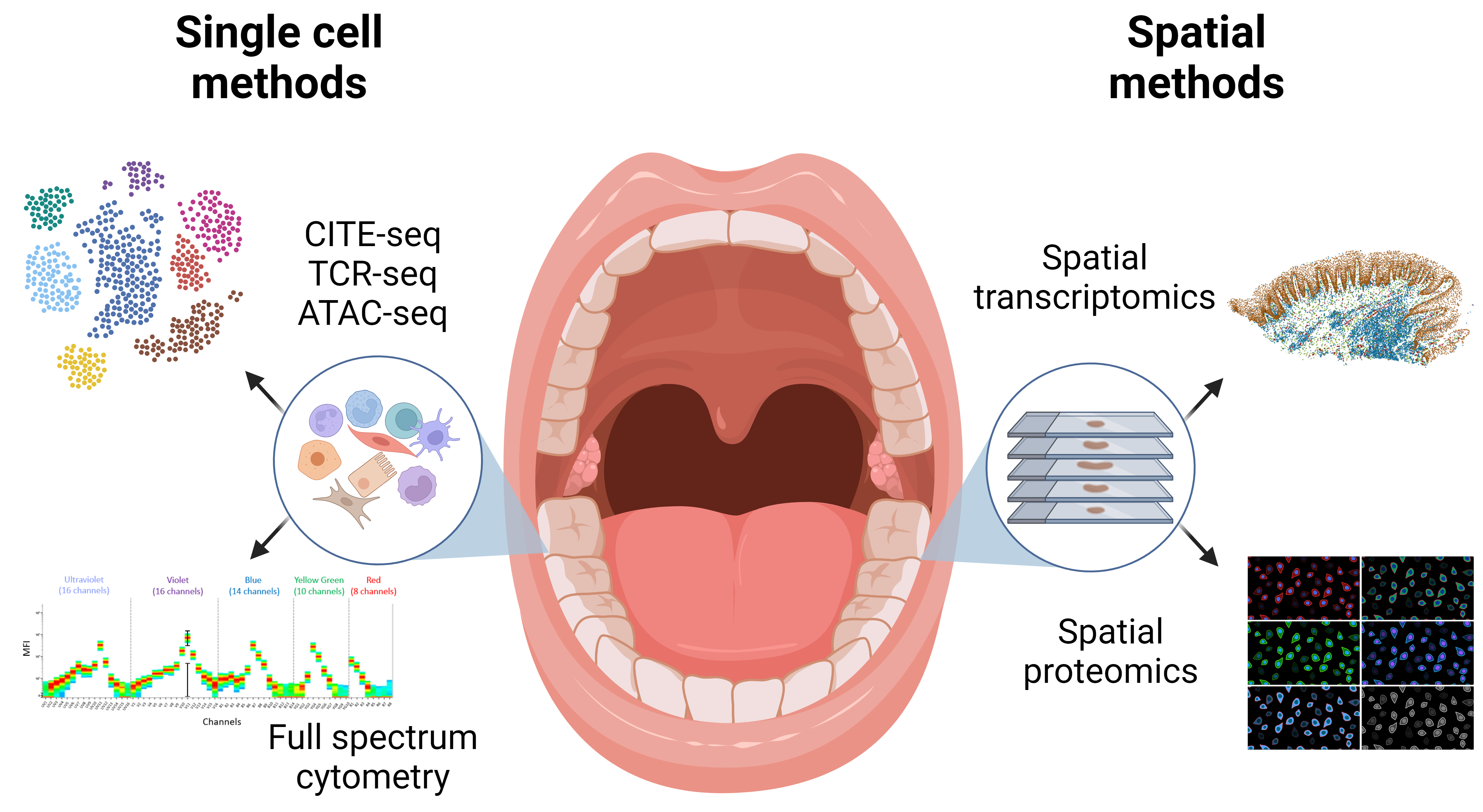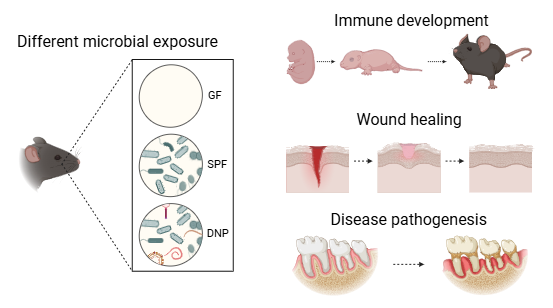Research Topics
Antigen-specific T cell responses at the oral barrier

Broadly, we are interested in the delicate interplay between host cells and microbes in barrier tissue. Relatively little is known how host cells respond to specific bacterial antigen and non-specific bacterial stimuli at the oral barrier.
We are generating the following tools in order to understand how antigen-specific responses to oral microbes contributes to disease pathogenesis:
- transgenic and retrogenic mice expressing a T cell receptor that recognizes Aggregatibacter actinomycetemcomitans (Aa)
- MHC tetramers that identify Aa-specific T cells
We will use these tools to:
- understand antigen-specific T cell response to oral pathogens in the oral mucosa
- study the role of oral pathogens in peripheral disease
Additionally, we will utilize the tool development pipeline to study the role of commensal microbes in oral mucosal homeostasis and disease.
Molecular architecture and deep immunophenotyping of the oral barrier

We employ a systems biology approach to better understand homeostasis at the oral barrier, and importantly, how homeostasis is disrupted during wound healing and periodontal disease.
We are actively working to expand our understanding of processes that govern disease in human and mouse models using a combination of approaches, including:
- spatial transcriptomics
- multiplex immunostaining
- multi-modal single cell sequencing
- full spectrum flow cytometry
Role of microbiome in development, homeostasis, and disease pathogenesis

The human body contains trillions of microbes, referred to as the microbiome. The microbiome can be beneficial or detrimental to host health depending on its complex composition and host-intrinsic factors. Despite this, laboratory animals that are used to mimic human disease are generally bred in sterile environments free from pathogens, leading to immature immune systems that are closer to newborn humans rather than the adults they are meant to imitate.
We are interested in studying how different microbial environments influence oral mucosal immune development, wound healing, and disease pathogenesis. To test this, we utilize germ free (GF), specific pathogen free (SPF), and mice with exposure to diverse natural pathogens (DNP).
